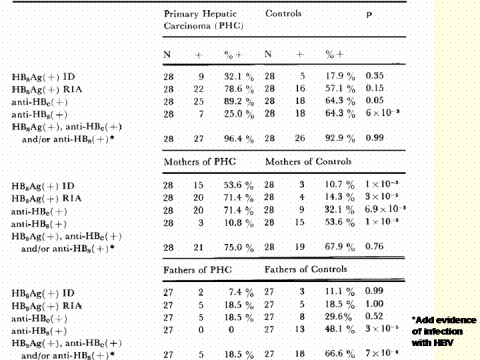 |
In our studies in
Senegal and Mali, Bernard Larouzé and others found that essentially all the
patients had been infected with HBV and that most had evidence of current
infection (presence of HBsAg and/or anti-HBc). Ohbayashi and his colleagues
(44) had reported several families of patients with PHC in which the mothers
were carriers. In our study in Senegal (56) we found that a significantly
larger number of mothers of PHC patients were carriers of HBsAg compared
with controls, and that none of the fathers of the cases had anti-HBs. In
control families, on the other hand, 48% of the fathers developed antibody
(Table 2). The hypothesis we have made is that, in some families, children
will be infected by their mothers, in utero, at the time of birth,
and/or shortly afterwards during the period when there is intimate contact
between mother and children.
|
